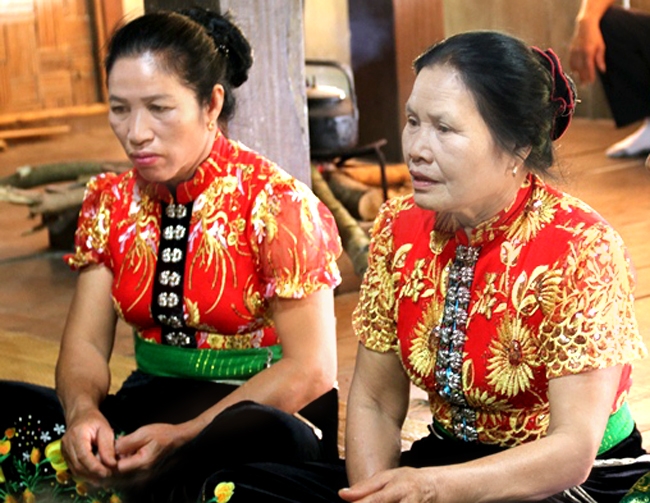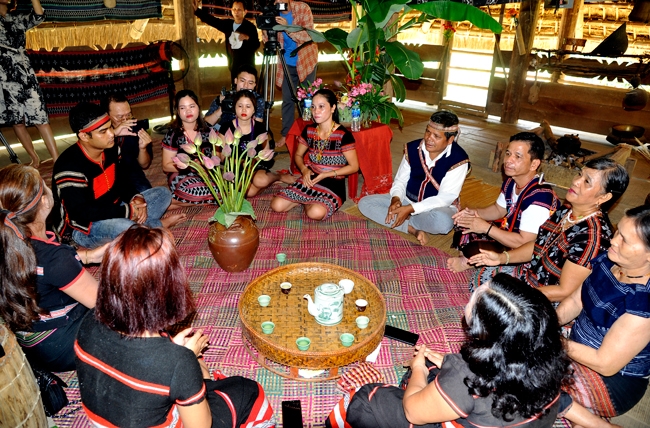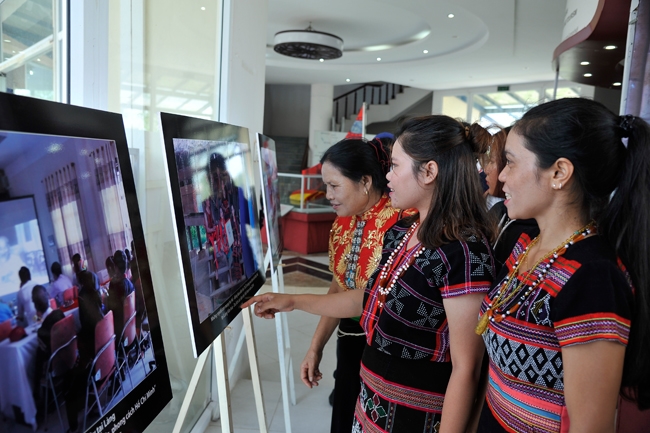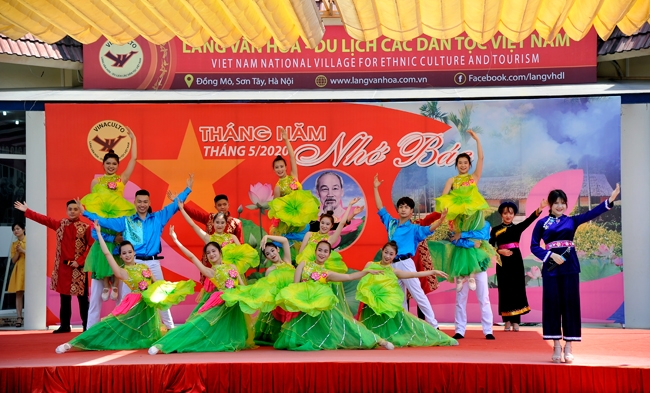The Highlight of the program are stories of the Tay, Nung, Muong, Mong, Thai, Kho Mu, and Dao ethnic minorities on Uncle Ho when he carried out revolutionary activities in Cao Bang for developing revolutionary bases in the northern mountainous localities.

Ethnic minority people gather to tell stories aboutUncle Ho.

Muong ethnic minority artisan Dinh Van Luong told his memory in 1975
when he was voted as a good Uncle Ho’s children and visited Uncle Ho Mausoleum

Artisan Lo Thi Tom (right) shared her memories when she met Uncle Ho in
1959.

E De ethnic minority people recalled stories about Uncle Ho heard since
they were children.

Ethnic minority people sing songs praising Uncle Ho together, and watch
video clips on Uncle Ho’s activities in Pac Bo and his reading of the
Declaration of Independence on September 2nd, 1945.

People with the Ho surname tell stories about Uncle Ho and his lessons
drawn from the great leader’s revolutionary life.

Ethnic minority people were determined to follow Uncle Ho’s example.

The cultural village of tourism of ethnic groups in Vietnam with display
of Uncle Ho’s activities with communities.

The display helps the audience understand more about President Ho Chi
Minh’s life and revolutionary career.

An art performance dedicated to Uncle Ho

Uncle Ho’s teachings remain a driving force for ethnic minority to boost
development and national protection.
BTA